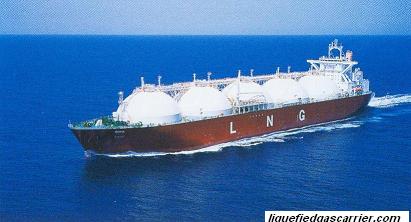

Home page|||
LNG handling |||
LPG handling||| Other Gas products|||
Fire & Safety|||
Emergency response |||
Liquefied gas carrier operation - Cargo operation logbook
During cargo operations, the officer on watch shall enter into the logbook the items of cargo operations carried out while he is on watch, the measurements of ullage and the like, operational conditions of pumps, descriptions of the operations, and others.
Chief Officer shall give and enter all necessary instruction while operations on Tanker Cargo Operations Logbook for the authorized duty officers before leaving from Cargo Control Room.
The following instruction should be included:
(1) Specific items that must be paid attention on the particular operation
(2) Specific events, conditions that must be called Chief Officer immediately.
(3) Specific points, time that must be called Chief Officer.
Below is the most commonly used terms and their definitions used in gas carrier log book.
Drying :To remove moisture from cargo tanks, pipe-works, etc.
In order to reduce the dew point and minimize potential ice
formation problems.
Inerting :To reduce oxygen content in the cargo system to prevent flammable
atmospheres in the subsequent gassing up Operation.

Purging :To replace inert gas (GN2) in the cargo tanks, etc. with vapor of the
cargo to be loaded.
Cooldown :To reduce temperature of the cargo tank prior to loading in
order to minimize thermal stresses and excessive tank pressures
during loading.
Cooling stock :Which may be in use for changing cargo and cooldown
operations (Coolant)
Loading :Which may involve cooling the product below delivered temperature.
Discharging :Which may involve heating refrigerated cargoes for discharge into
pressurized storage.
Ballast voyage :Which may involve preparing the cargo tanks for a change of cargo
stowage.
Changing cargo :Which may involve gas freeing, inerting, and regassing-up.
Preparation for inspection or dry-docking
:Involving gas freeing by inerting followed by aeration.
Related Information:
Safety checklist for gas carrier
Reactivity of liquefied gas cargo and safety guideline
Preparation for loading LNG cargo
Drying of Cargo Tanks and preparation for loading LNG cargo
Inerting of Cargo Tanks prior loading LNG cargo
Gassing-up requirement for cargo tanks
Initial Cool Down of cargo tanks
LNG spill risk during marine transportation and hazards associated
Toxicity and associated health hazards in liquefied Gas Carrier
Safety check items prior loading LNG cargo
Defining various gas carrier types
Fuel flexibility of LNG ships
LNG ship spillage risk
LNG shipment
Initial Cool Down of cargo tanks
Leaks on the Cargo System, Continuous Flow - how to prevent
LNG tank leaks and immediate action by gas carriers
Leaks from a Loading Arm due to Tidal or Current Effects
Minor or major leaks from LNG tanks
Procedures for LNG cargo discharging

// Home page///
LNG handling ///
LPG handling///
Sea transport ///
Gas products///
Cargo work
///Fire precautions
///Health hazards
///Safety Precautions
///Emergency response ///

Copyright © Liquefied Gas Carrie.com All rights reserved.
The content published in this website are for general reference only. We have endeavoured to make the information
as accurate as possible but cannot take responsibility for any errors. For latest information please visit www.imo.org .
Any suggestions, please Contact us !
///Links &Resources //
Terms of use///
Privacy policy///Home page///
